If You Can Perform These 5 Moves at 60, Your Body’s Decades Younger
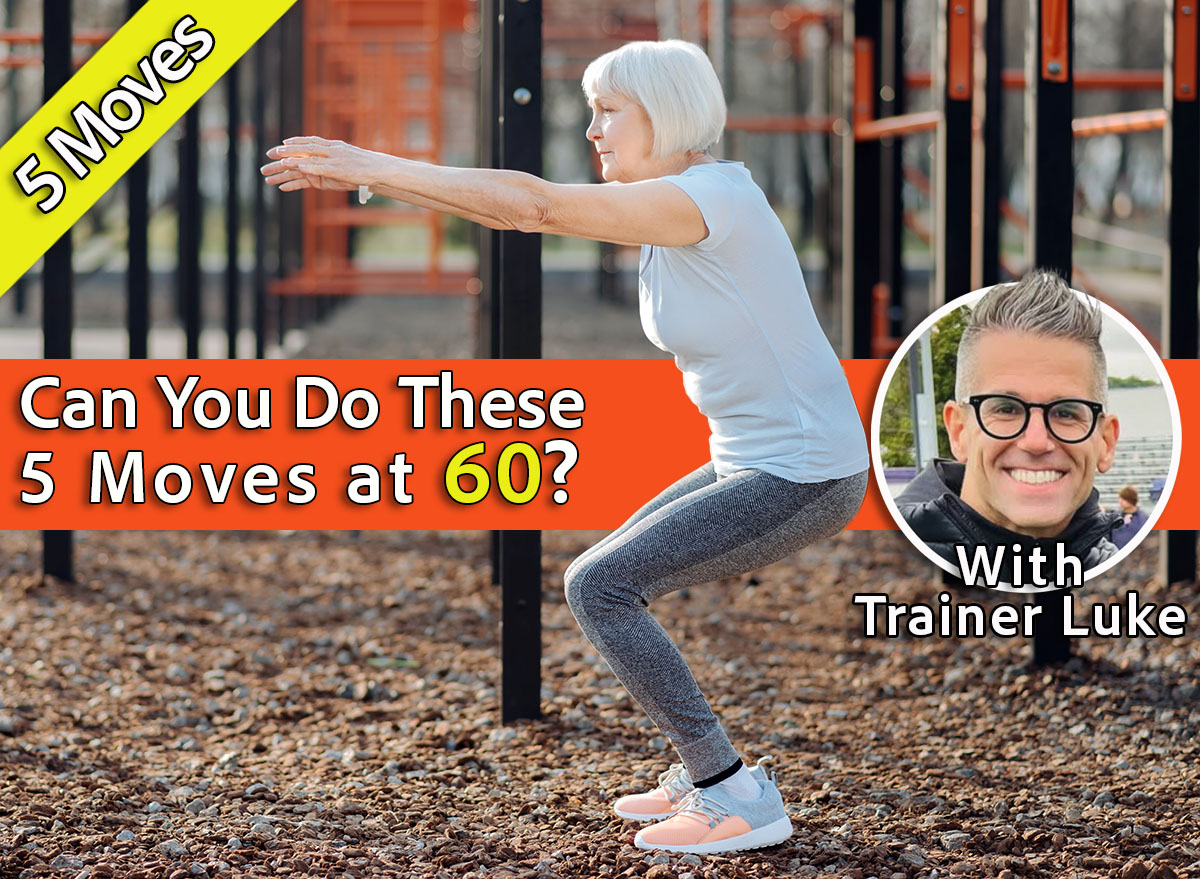
Sixty is considered middle age by today’s standards, which means you could still have plenty of vibrant years ahead. That’s why being in great physical shape should be high on your priority list. But how do you know if you are as fit and strong as you should be at 60? We took the guesswork out of the equation with five expert-approved strength workouts. If you can do the below movements at 60, you’re literally decades ahead of the fitness curve.
“As we age, we need to focus on getting as strong as possible,” Luke Carlson, ACSM certified exercise physiologist, ACSM certified cancer exercise trainer, and founder and CEO at Discover Strength, tells us. “We don’t need to be more active, become more flexible, or increase mobility, we need to get strong … There is no fountain of youth, but there is strength training.”
All muscle groups decline pretty evenly. But as we get older, there is more loss of “fast twitch” muscle fibers, which allow forceful contraction of muscles, Luke points out.
“To counteract this, we can perform the basic strength training exercises listed above and on the final few reps, when the weight becomes very challenging, we should attempt to lift the weight fast,” he explains. “Of course, the weight won’t actually move fast because we are so fatigued. But this attempt to lift the weight fast taps into these fast twitch muscle fibers (in a very safe manner).”
Here are the five movements Luke recommends doing to test your longevity and performance at 60.
Leg Press or Squat

A leg press trains the glute muscles, hamstrings, and quads.
“Not only do we increase the muscle mass and strength in this area, but we also stimulate metabolic health benefits when performing strength training exercises for large muscle groups,” Luke says.
Here’s how to do a bodyweight squat.
- Stand tall with your feet shoulder-distance apart and arms at your sides.
- Descend into a bodyweight squat, maintaining a tall chest.
- Lower until your thighs become parallel to the floor.
- Press through your heels to rise up.
Chest Press
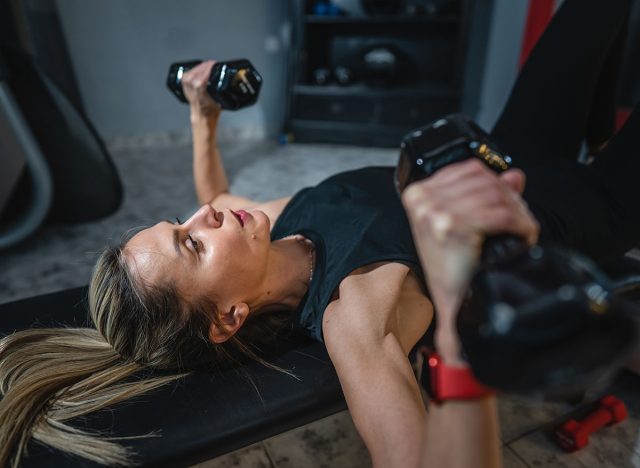
A chest press works the chest and triceps. You can perform the chest press motion with dumbbells, a machine, or by doing a pushup.
- Lie flat on your back on a workout bench, holding a dumbbell in each hand just outside your chest.
- Keep your feet flat on the ground and maintain an engaged core.
- Press the dumbbells over your chest until your arms are extended but not locked out.
- Use control to lower the weights.
A Rowing or Pulldown Movement
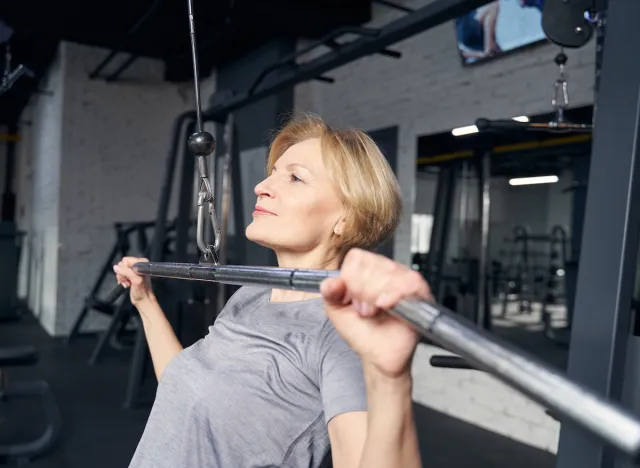
A rowing or pulldown movement works the muscles of the lats/upper back.
Here’s how to do a lat pulldown.
- Begin seated at a lat pulldown machine, holding onto the bar with a shoulder-width overhand grip.
- Bring your shoulders back and down as you pull the bar down toward your upper chest.
- Hold at the bottom of the movement before slowly releasing the bar back to the start position.
Shoulder Press
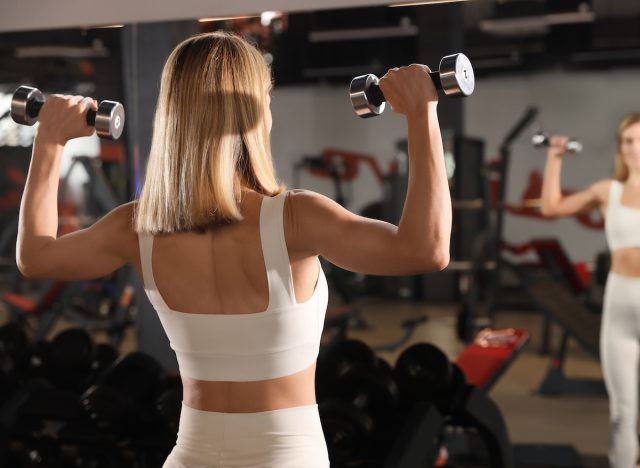
The shoulder press will increase the strength of the triceps and shoulders. You can do this exercise using a dumbbell or machine.
- Keep your core tight as you stand tall with a dumbbell in each hand held at shoulder height.
- Press the dumbbells overhead until your arms are completely extended.
- Use control to lower the dumbbells to shoulder height.
Lower Back Extension
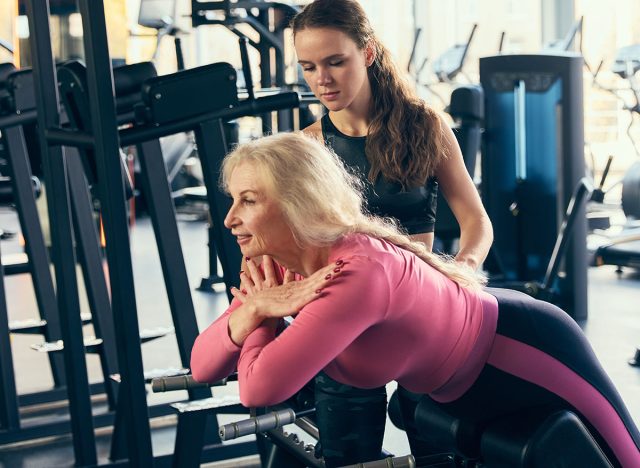
The lower back extension is a stellar movement to address chronic lower back pain, as it strengthens the muscles of the lower back.
- Position yourself on a back extension bench with your feet locked in and hips situated just above the pad.
- Cross your arms in front of your chest or hold onto a dumbbell for extra resistance.
- Lower your upper body toward the ground while maintaining a neutral spine.
- Lift your torso until your body becomes straight from your head to your heels.
- Pause at the top of the movement before lowering with control.